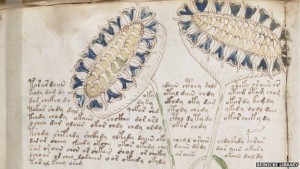The Voynich Manuscript – A Book of Witchcraft
 There are numerous unexplainable mysteries in the world. What’s the explanation behind the Fermi Paradox? Are there other universes besides our own? Why is it that some of the best online casino reviews always recommend the same games? Okay, maybe not that last one, but you get what I mean! Our Earth, for as small and insignificant as it is in the grand scheme of the universe, seems to be more riddled with mysteries than the town of Gravity Falls. And yet most mysteries have an explanation, or at least a theory surrounding them. That’s why it’s always fascinating for me to discover objects, like the London Hammer which defy all explanation. And boy, do I have the mother of all unexplainable objects for you today! An item so odd that it keeps being associated with magic and witchcraft even to this day.
There are numerous unexplainable mysteries in the world. What’s the explanation behind the Fermi Paradox? Are there other universes besides our own? Why is it that some of the best online casino reviews always recommend the same games? Okay, maybe not that last one, but you get what I mean! Our Earth, for as small and insignificant as it is in the grand scheme of the universe, seems to be more riddled with mysteries than the town of Gravity Falls. And yet most mysteries have an explanation, or at least a theory surrounding them. That’s why it’s always fascinating for me to discover objects, like the London Hammer which defy all explanation. And boy, do I have the mother of all unexplainable objects for you today! An item so odd that it keeps being associated with magic and witchcraft even to this day.
In 1912, a book dealer known as Wilfrid Voynich managed to get his hands on a rather extraordinary find, though he didn’t realize it at first. At a glance, it seemed like just any old book written in a foreign language and talking about plants and stars, possibly an encyclopedia or a traveler’s journal. It’s nothing that unusual – there’s plenty of those around in various collections. But upon closer examination, one would realize that not only is this journal written in a completely foreign language that has never been encountered before or since, but it also depicts plants and star systems that don’t actually exist in the real world, neither today, nor during the 1400s, when the book was written. It almost seems like it doesn’t really belong to our world.
The book, which would gain the moniker of the Voynich Manuscript, was thoroughly studied by numerous experts – linguists, botanists, astronomers and more, in an attempt to discover something, anything, that could provide the key to cracking the mystery. Some of the biggest code breakers who operated during WWI and WWII tried their hand at solving the code, but alas, they came up empty handed. A popular theory is that, since it’s so uncrackable, the Manuscript is actually a fake – nothing more than a collection of random jumbles and pictures. But linguists have been able to determine that the writing is consistent with the syntax of a real language that has its own alphabet, and several nouns have been successfully deciphered. If this is a fake, then it is an exceptionally well-made one – and even if it is, we still have no idea what use someone from the 15th century could possibly have for a book written in a fictitious language containing illustrations of plants that do not exist.
So, if we assume that it’s not a fake, what are some possible explanations of the Voynich Manuscript? One possible explanation is that it’s some sort of cipher, with not just the language, but also the images and diagrams on its pages serving as parts of the code. According to Robert S. Brumbaugh, it’s possibly that the Manuscript is an imperfect copy of an earlier code, hence why it’s impossible to decipher. Other researchers who have studied the book have claimed that it’s a coded or early version of pretty much any language imaginable – German, Aztec, Hebrew, even Chinese. Theories range from the plausible to the downright improbable (like Dan Burisch’s claim that the Manuscript contains clues leading to alien technology), but one thing’s for sure – we have no idea where to even begin with it.